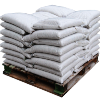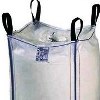| Aadhunik Industries is a manufacturing group company. Aadhunik Industries is pioneer manufacturers of Specialty Chemicals, Pharmaceutical Excipients, Food Fragrance & Flavor chemicals in India. It has toll manufacturers and representatives in UAE, Europe, Canada & USA and agents & customers in all countries like USA, Canada, Europe, UAE Dubai, South Africa, Tanzania, Kenya, Egypt, Nigeria, Uganda, Turkey, Mexico, Brazil, Chile, Argentina, Malaysia, Indonesia, Thailand, Korea, Japan, etc. Halal & Kosher certified Aluminium Magnesium Silicate Magnesium or Aluminum Silicate Manufacturers made in a FDA-GMP plant is offered. |
| The units have one or more of the certifications like FDA GMP, ISO 9001, ISO 22000, HACCP, REACH, Kosher & Halal and DMF support is available. |




Aluminium Magnesium Silicate or Magnesium Aluminum Silicate USP BP Ph Eur Grade Manufacturers
SDS of Aluminium Magnesium Silicate or Magnesium Aluminum Silicate USP BP Ph Eur Grade Manufacturers
Aluminium Magnesium Silicate BP Grade & Ph Eur Grade Specifications
Ph Eur
CAS 12511-31-8
Action and use: Excipient.
DEFINITION
Mixture of particles with colloidal particle size of montmorillonite and saponite, free from grit and non-swellable ore.
Content:
aluminium (Al; Ar 26.98): 95.0 per cent to 105.0 per cent of the value stated on the label.
magnesium (Mg; Ar 24.30): 95.0 per cent to 105.0 per cent of the value stated on the label.
CHARACTERS
Appearance: Almost white powder, granules or plates.
Solubility: Practically insoluble in water and in organic solvents. It swells in water to produce a colloidal dispersion.
IDENTIFICATION
A. Fuse 1 g with 2 g of anhydrous sodium carbonate. Warm the residue with water and filter. Acidify the filtrate with hydrochloric acid and evaporate to dryness on a water-bath. 0.25 g of the residue gives the reaction of silicates.
B. Dissolve the remainder of the residue obtained in identification test A in a mixture of 5 mL of dilute hydrochloric acid and 10 mL of water. Filter and add ammonium chloride buffer solution pH 10.0. A white, gelatinous precipitate is formed. Centrifuge and keep the supernatant for identification C. Dissolve the remaining precipitate in dilute hydrochloric acid. The solution gives the reaction of aluminium.
C. The supernatant liquid obtained after centrifugation in identification test B gives the reaction of magnesium.
TESTS
pH: 9.0 to 10.0.
Disperse 5.0 g in 100 mL of carbon dioxide-free water.
Arsenic: Maximum 3 ppm.
Transfer 16.6 g to a 250 mL beaker containing 100 mL of dilute hydrochloric acid. Mix, cover with a watch glass and boil gently, with occasional stirring, for 15 min. Allow the insoluble matter to settle and decant the supernatant liquid through a rapid- flow filter paper into a 250 mL volumetric flask, retaining as much sediment as possible in the beaker. To the residue in the beaker add 25 mL of hot dilute hydrochloric acid, stir, heat to boiling, allow the insoluble matter to settle and decant the supernatant liquid through the filter into the volumetric flask. Repeat the extraction with 4 additional quantities, each of 25 mL, of hot dilute hydrochloric acid, decanting each supernatant liquid through the filter into the volumetric flask. At the last extraction, transfer as much of the insoluble matter as possible onto the filter. Allow the combined filtrates to cool to room temperature and dilute to 250.0 mL with dilute hydrochloric acid. Dilute 5.0 mL of this solution to 25.0 mL with dilute hydrochloric acid.
Lead: Maximum 15 ppm.
Loss on drying: Maximum 8.0 per cent, determined on 1.000 g by drying in an oven at 105C.
Microbial contamination:
TAMC: acceptance criterion 1000 CFU/g.
TYMC: acceptance criterion 100 CFU/g.
Absence of Escherichia coli.
Magnesium Aluminum Silicate USP NF Grade Specifications
Magnesium Aluminum Silicate is a blend of colloidal montmorillonite and saponite that has been processed to remove grit and non-swellable ore components.
The requirements for viscosity and ratio of aluminum content to magnesium content differ for the several types of Magnesium Aluminum Silicate, as set forth in the accompanying table.
| Type | Viscosity(cps) | (Al content)/(Mg content) |
| Min. ---- Max. | Min. ---- Max. | |
| IA | 0225 ---- 0600 | 0.5 ------ 1.2 |
| IB | 0150 ---- 0450 | 0.5 ------ 1.2 |
| IC | 0800 ---- 2200 | 0.5 ------ 1.2 |
| IIA | 0100 ---- 0300 | 1.4 ------ 2.8 |
Identification: Add 2 g in small portions to 100 mL of water, with intense agitation. Allow to stand for 12 hours to ensure complete hydration. Place 2 mL of the resulting mixture on a suitable glass slide, and allow to air-dry at room temperature to produce an oriented film. Place the slide in a vacuum desiccator over a free surface of ethylene glycol. Evacuate the desiccator, and close the stopcock so that the ethylene glycol saturates the desiccator chamber. Allow to stand for 12 hours. Record the Xray diffraction pattern, and calculate the d values: the largest peak corresponds to a d value between 15.0 and 17.2 angstrom units. Prepare a random powder specimen of Magnesium Aluminum Silicate, record the X-ray diffraction pattern, and determine the d values in the region between 1.48 and 1.54 angstrom units: peaks are found between 1.492 and 1.504 angstrom units and between 1.510 and 1.540 angstrom units.
Viscosity: After determining the Loss on drying, weigh a quantity of Magnesium Aluminum Silicate test specimen equivalent to 25.0 g on the dried basis. Over a period of a few seconds, transfer the un-dried test specimen to a suitable 1-L blender jar containing an amount of water, maintained at a temperature of 25 ± 2 , that is sufficient to produce a mixture weighing 500 g. Blend for 3 minutes, accurately timed, at 14,000 to 15,000 rpm (high speed). [NOTE—Heat generated during blending causes a temperature rise to above 30 .] Transfer the contents of the blender to a 600-mL beaker, allow to stand for 5 minutes, and adjust, if necessary, to a temperature of 33 ± 3 . Using a suitable rotational viscosimeter equipped with a spindle as specified below, operate the viscosimeter at 60 rpm for 6 minutes, accurately timed, and record the scale reading. For Type IA, use a spindle having a cylinder 1.87 cm in diameter and 0.69 cm high attached to a shaft 0.32 cm in diameter, the distance from the top of the cylinder to the lower tip of the shaft being 2.54 cm, and the immersion depth being 5.00 cm (No. 2 spindle); if the scale reading is greater than 90% of full-scale, repeat the measurement, using a spindle similar to the No. 2 spindle but having the cylinder 1.27 cm in diameter and 0.16 cm high instead (No. 3 spindle). For Type IC, use a No. 3 spindle; if the scale reading is greater than 90% of full-scale, repeat the measurement using a spindle consisting of a cylindrical shaft 0.32 cm in diameter and having an immersion depth of 4.05 cm (No. 4 spindle). For Types IB and IIA, use a No. 2 spindle.
Microbial limits: Its total aerobic microbial count does not exceed 1000 cfu per g, and it meets the requirements of the test for absence of Escherichia coli.
pH: between 9.0 and 10.0, in a suspension (5 in 100) in water.
Loss on drying: Dry it at 110C to constant weight: it loses not more than 8.0% of its weight.
Acid demand: After determining the Loss on drying, weigh a quantity of Magnesium Aluminum Silicate equivalent to 5.00 g, and disperse in 500 mL of water with the aid of a suitable blender fitted with a 1-liter jar. Using a stopwatch, designate zero time. With constant mixing, add 3.0-mL portions of 0.100 N hydrochloric acid at 5, 65, 125, 185, 245, 305, 365, 425, 485, 545, 605, 665, and 725 seconds, and add a 1.0-mL portion at 785 seconds. Determine the pH potentiometrically at 840 seconds: the pH is not more than 4.0.
Arsenic: The limit is 3 ppm.
Lead: To pass the test The absorbance of the Test preparation is not greater than that of the Standard preparation (0.0015%).
Aluminium Magnesium Silicate or Magnesium Aluminum Silicate USP BP Ph Eur Grade Manufacturers
Aadhunik Industries
Ankleshwar Gujarat &, Mumbai, India
TEL: (OFFICE) 91-22-23774610, 23723564.
e-mail: info@aadhunikindustries.com

Exports to USA, Canada, UAE, Dubai, South Africa, Tanzania, Kenya, Nigeria, Egypt, Uganda, Turkey, Mexico, Brazil, Chile, Argentina, Europe Netherlands, Italy, Spain, Germany, Portugal, France, Malaysia, Indonesia, Thailand, Korea, Vietnam, Japan, etc.
Copyright and Usual Disclaimer is Applicable